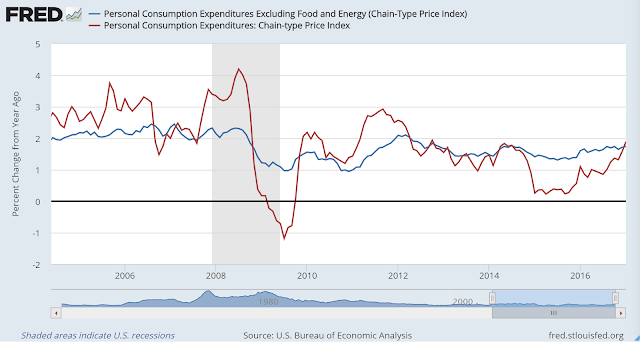I attended the
Forum for Research in Empirical International Trade (FREIT) in Yogyakarta, Indonesia this past week. Marc Muendler and I were debating the source of China's excess savings, over and above its high level of investment. China's high savings rate could have multiple causes (
e.g., lack of a social safety net implies a need for precautionary savings, while countries that are growing fast, such as the Asian Tigers, have a clear tendency to save a lot), and various policies could be at play. However, in this post I merely want to lay out how an undervalued real exchange rate, which can be accomplished with a combination of capital controls and foreign reserve accumulation, could increase the rate of savings.
The short story is that an undervalued RER will increase exports and decrease imports, and this equals the gap between savings and investment by accounting identity.
First, why does a high savings rate matter? A high savings rate (over investment) means that China will be exporting both capital and goods to the US, and that it won't be importing many goods. This is due to accounting identity: Savings (S) - Investment (I) = Exports (X) - Imports (M).
Imagine that, at first, S = I, which implies that X = M, while the RER is fairly valued. Now imagine that China devalues its RER by 40%. This change in relative prices means that exports will surge while imports will fall. This will also imply that savings will be less than investment. What is the logic? Let's have a closer look at accounting identities:
Y = C + I + G + X - M
(Where Y = output, C = consumption, I = Investment, G = Government spending, etc.)
Clearly, if the Yuan is weak, then, on one hand, China will export more, and on the other, it will import less. Thus, output will rise. That's straightforward. Total consumption (of domestically produced goods and of imports) may decrease by a little as imports become more expensive, but this effect is likely to be drowned out by changes in the trade balance. It could decrease by more if China also raises domestic interest rates to counter inflation, something which would cause imports to plunge further. How will savings increase? Savings is income not taxed or spent:
S = (Y - T - C) + (T - G)
Total savings equals private and public savings. Fast Chinese growth will also tend to boost T relative to G, and might also boost Y relative to C. If China undervalues its exchange rate, and also raises its domestic interest rates to contain inflation, C could fall, raising savings. There could also be a cultural explanation as Asian countries tend to have high levels of savings in general, although this doesn't explain why savings is larger than investment, or why savings rates have declined recently in Japan and Taiwan (or why growth pre-dated high savings rates in several of these countries). Trade doesn't show up here, but we can substitute in for Y from the equation above, and get:
S = (( C + I + G + X - M ) - T - C ) + ( T - G )
And now simplify to:
S - I = X - M
Savings minus investment equals exports minus imports. Exports and imports clearly depend on the real exchange rate, and thus so does the gap of savings over investment. I'm not always the biggest advocate for the use of mathematics in economics, but in some cases it can really help for clarification. The above algebra makes this result seem obvious and intuitive, but your average intelligent guy-in-a-bar wouldn't find a link between the exchange rate and savings intuitive or obvious without looking at the math.
A more controversial assertion is that, because of
hysteresis, an undervalued exchange rate yesterday could mean you'll have a larger tradables sector today, and thus more savings. On the other hand, in recent years, with weaker Chinese growth and looser monetary policy, the Chinese government in has been trying to prop
up the currency, although this doesn't necessarily mean that the Chinese currency is overvalued from the perspective of its tradable sector. But it does mean that this is a topic deserving of further study.

















